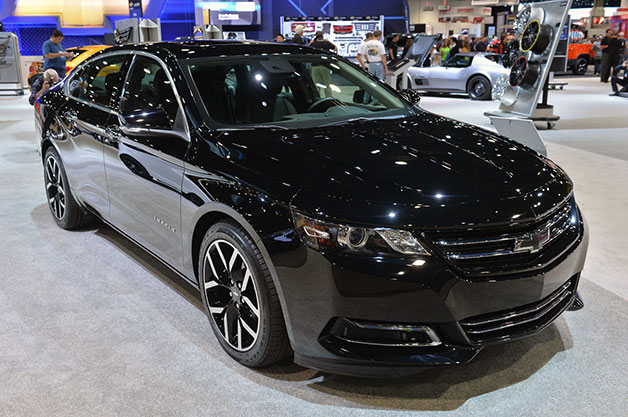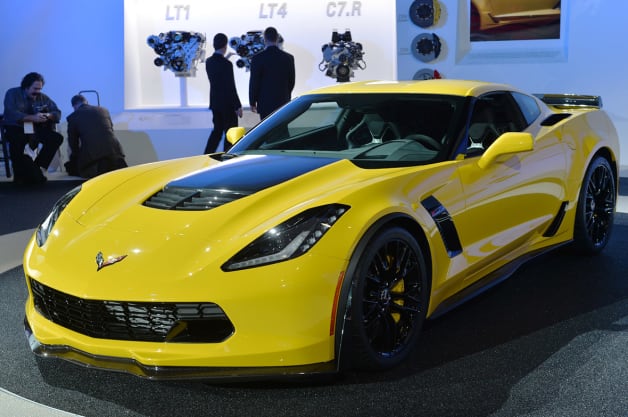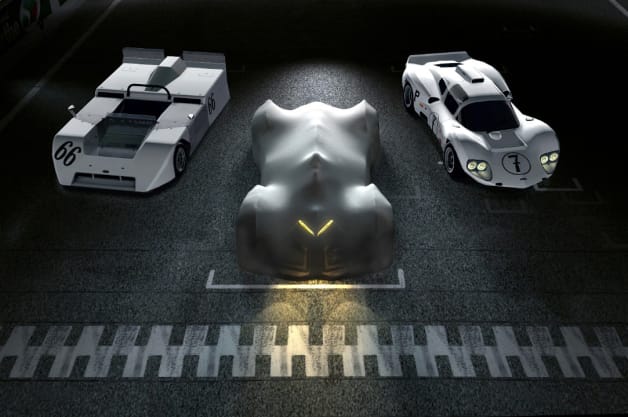
By General Motors, Detroit - With a giant screen that has more pixels than an IMAX theater, the temptation is ever present to watch a movie or hook up a video game console. At Chevrolet, however, this high-tech display is instrumental to refining vehicle design.
The 4K ultra-fine resolution PowerWall system, capable of displaying both 2D and 3D content, allows designers and engineers to compare versions of part designs and ideas without the need for expensive physical prototypes. The team can quickly examine several concepts and speed a decision on the best solution.
The 2015 Chevrolet Colorado was a major focus of the PowerWall. The 2015 MOTOR TREND Truck of the Year is customizable with accessories that match the owner's personality. Making these features fit right and look good is time consuming.
For example, the Colorado's chrome assist step was designed with black treads in part to avoid the unslightly reflection of drain holes in the bottom edges of the cab. The treads on the Colorado assist step were evaluated for this issue with the PowerWall more than a year before a physical prototype was available.
"That's the beauty of this kind of high definition. Using the math data, we can render the vehicle as the customer will see it in the 'as manufactured state'", said Joe Guzman, engineering group manager for Global Virtual Design Process & Operations. "Designers and engineers can then scrutinize every detail to make sure they are spot on."
In addition to the assist step, the GearOnTM, customizable and adjustable cargo system for the truck bed was evaluated on the PowerWall to assure it looked and performed as intended.
Guzman, who started as a wood model maker, said the PowerWall won't replace clay modeling or other physical prototypes anytime soon. But for dozens of minor and major decisions, the technology's speed, precision and lifelike accuracy allow attributes like reflections, finishes, glare and lighting to be assessed many months or years before the first physical vehicles are built.
The PowerWall solution comprises a 240 square-foot solid glass screen, and two Christie Mirage 4K25 DLP 3D projectors, powered by eight computers and two Christie Spyder X20 video processors. The team of virtual reality experts includes three visualization specialists, an IT technician and a Christie hardware engineer.
The 4K ultra-fine resolution PowerWall system, capable of displaying both 2D and 3D content, allows designers and engineers to compare versions of part designs and ideas without the need for expensive physical prototypes. The team can quickly examine several concepts and speed a decision on the best solution.
The 2015 Chevrolet Colorado was a major focus of the PowerWall. The 2015 MOTOR TREND Truck of the Year is customizable with accessories that match the owner's personality. Making these features fit right and look good is time consuming.
For example, the Colorado's chrome assist step was designed with black treads in part to avoid the unslightly reflection of drain holes in the bottom edges of the cab. The treads on the Colorado assist step were evaluated for this issue with the PowerWall more than a year before a physical prototype was available.
"That's the beauty of this kind of high definition. Using the math data, we can render the vehicle as the customer will see it in the 'as manufactured state'", said Joe Guzman, engineering group manager for Global Virtual Design Process & Operations. "Designers and engineers can then scrutinize every detail to make sure they are spot on."
In addition to the assist step, the GearOnTM, customizable and adjustable cargo system for the truck bed was evaluated on the PowerWall to assure it looked and performed as intended.
Guzman, who started as a wood model maker, said the PowerWall won't replace clay modeling or other physical prototypes anytime soon. But for dozens of minor and major decisions, the technology's speed, precision and lifelike accuracy allow attributes like reflections, finishes, glare and lighting to be assessed many months or years before the first physical vehicles are built.
The PowerWall solution comprises a 240 square-foot solid glass screen, and two Christie Mirage 4K25 DLP 3D projectors, powered by eight computers and two Christie Spyder X20 video processors. The team of virtual reality experts includes three visualization specialists, an IT technician and a Christie hardware engineer.

















